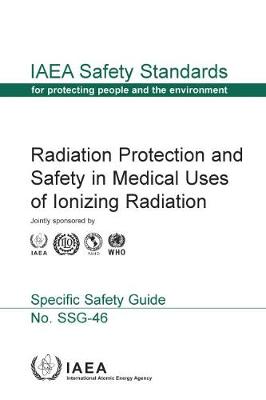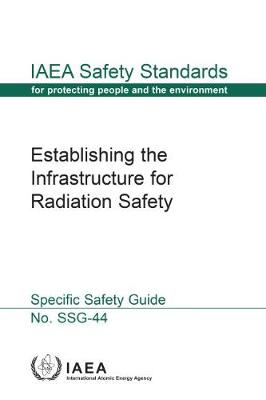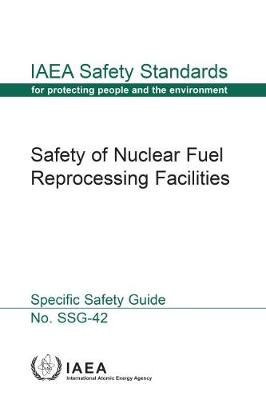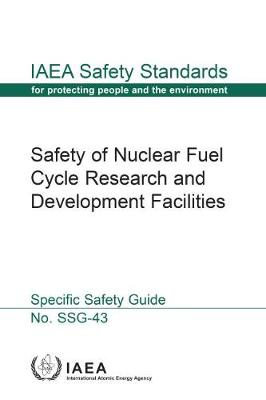IAEA Safety Standards
6 total works
Radiation Protection and Safety in Medical Uses of Ionizing Radiation
by Iaea
Published 30 December 2018
This Safety Guide provides recommendations and guidance on fulfilling the requirements of IAEA Safety Standards Series No. GSR Part 3 for ensuring radiation protection and safety of radiation sources in medical uses of ionizing radiation with regard to patients, workers, carers and comforters, volunteers in biomedical research, and the public. It covers radiological procedures in diagnostic radiology (including dentistry), image guided interventional procedures, nuclear medicine, and radiotherapy. Recommendations and guidance are provided on applying a systematic approach to ensure that there is a balance between being able to utilize the benefits from medical uses of ionizing radiation and minimizing the risk of radiation effects to people.
Communication and Consultation with Interested Parties by the Regulatory Body
by Iaea
Published 30 January 2018
This Safety Guide provides recommendations on meeting the safety requirements concerning communication and consultation with the public and other interested parties by the regulatory body about the possible radiation risks associated with facilities and activities, and about processes and decisions of the regulatory body. The Safety Guide can be used by authorized parties in circumstances where there are regulatory requirements placed on them for communication and consultation. It may also be used by other organizations or individuals considering their responsibilities for communication and consultation with interested parties.
The objective of this Safety Guide is to provide guidance on the establishment of the national radiation safety infrastructure that meets the IAEA safety standards. It provides recommendations, in the form of actions, on meeting the relevant Safety Requirements in an effective and integrated manner while taking specific national circumstances into full consideration. This Safety Guide does not diminish the application of, or provide a synopsis of or a substitute for, the IAEA Safety Fundamentals and Safety Requirements publications or other associated Safety Guides. Rather it sets out a holistic approach to the establishment of the national radiation safety infrastructure and provides advice for the application of IAEA safety standards for both, States having essentially no elements of the radiation safety infrastructure in place, and those that already have some.
This Safety Guide, co-sponsored by the ILO, provides general guidance on the establishment of an effective radiation protection programme for occupational exposure, appropriate for the sources of radiation likely to be encountered in a range of industries, medical institutions, educational and research establishments and nuclear fuel cycle facilities. This Safety Guide further provides the necessary guidance to meet the requirements as laid down in Safety Series No. 115, International Basic Safety Standards for Protection against Ionizing Radiation and for the Safety of Radiation Sources.
This publication provides guidance on meeting the requirements of IAEA Safety Standards Series No. NS-R-5 (Rev.1) relating to nuclear fuel reprocessing facilities. It covers the lifetime of these facilities, from site selection through to decommissioning, concentrating on the design and operational phases. It applies to facilities that reprocess spent fuel and other material from nuclear power plants that use metallic and oxide fuels, including materials from mixed oxide fuel (MOX) and breeder reactors. It covers the safety issues relating to: the handling of spent fuel; mechanical treatment and the dissolution of spent fuel in acid; the separation of uranium and plutonium from fission products using solvents; the separation and purification of plutonium and uranium; and the production and storage of solutions and oxides to be used as feed material to form fresh uranium or mixed (UO2/PuO2) oxide fuel.
This publication provides guidance on meeting the requirements of IAEA Safety Standards Series No. NS-R-5 (Rev.1) relating to research and development facilities in the nuclear fuel cycle. It covers the lifetime of these facilities from site selection through to decommissioning, concentrating on design and operation. It applies to laboratories, pilot workshops and experimental facilities that store, handle and process uranium, plutonium and other transuranics, fission products and activated materials in significant quantities. Such facilities may be involved in the study of chemical, metallurgical or radiological properties of specific radioactive materials such as prototype nuclear fuels (before and after reactor irradiation) or nuclear material or radioactive waste arising from experimental processes. This Safety Guide also applies to research and development for processes and equipment that are envisaged for later use on an industrial scale for the nuclear fuel cycle (e.g. pilot workshops for active waste conditioning).





